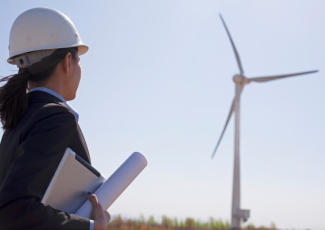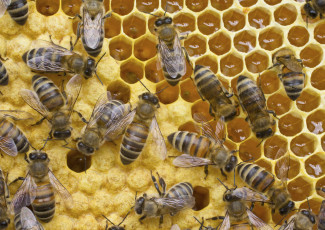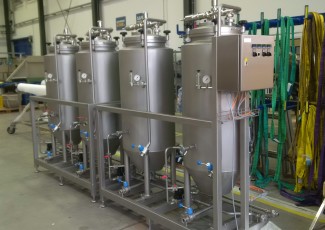Investing in a Sustainable Future
By Ellen Ullman
August 31, 2015
By taking several steps to conserve energy, the Borough of Manhattan Community College is saving money, getting the word out and modeling excellent behavior.
On September 11, 2001, the Borough of Manhattan Community College (BMCC) lost the ability to communicate. Classes were suspended for three weeks, and the college conducted business on cellphones for the next two months.
In 2003, the college was forced off the grid because of a power failure that affected most of the Northeast.
In 2012, when Hurricane Sandy blew into town, BMCC was cut off once again.
“At this point, we had to come up with another way get the message out during emergencies,” says Scott Anderson, vice president of administration and planning. “Our students and faculty need to know what’s happening,”
Becoming sustainable
Thanks to a partnership with New York City’s Department of Citywide Administrative Services (DCAS), a $14.5 million grant from the federal government and money from other state and local sources, the college began investing in new sources of power.
The first step was an energy audit.
Conducted by an engineer, an energy audit is a critical step for every campus to learn how to update outdated equipment and make other changes to improve energy efficiency.
By doing a few simple retrofits of its mechanical systems, BMCC was able to save hundreds of thousands of dollars.
Thermal blankets, improved lighting and more
At its 199 Chambers Street building, BMCC added R-25 insulation during the reconstruction of the college’s 100,000-square-foot roof, installed energy-efficient lighting with occupancy sensors and wrapped thermal blankets around steam pipes to conserve heat.
“We bought $109,000 worth of blankets and, in less than six months, we saw a return on that investment,” says Thomas Ching, BMCC’s chief administrative superintendent of buildings and grounds.
Then came a larger project: updating the air conditioning in the college’s 14,808-square-foot performing arts complex.
Because the building had no zone control, BMCC was spending $900 an hour to cool off the entire building instead of just the theater. A DCAS grant allowed for the installation of an independent chiller, and now the cooling can be confined to a specific area.
Everyone plays a role in conversation
BMCC encourages students to conserve energy with its building dashboard, a website that shows real-time energy usage in campus buildings and offers tips for saving electricity at school, at work and at home.
Instructors have begun covering sustainability in their classes, too. A couple of English professors even held a writing contest on ways to save the environment.
Anderson says the most important thing he’s learned is that there are a lot of low-cost, low-tech steps an institution can take.
“The projects we’ve been doing are not that expensive but yield a tremendous amount of financial savings,” he says. “Community colleges need to figure out how to save energy so that they are fiscally responsible as well as good citizens. It just makes sense.”
Positive steps yield positive benefits
In 2015, the college spent $1.3 million on sustainability efforts and reduced its power bill by $948,944. It also saved 249,000 kilowatt-hours, which is the equivalent of running a laptop 24/7 for 285,000 days.
“The City of New York pays for the energy we use, so by saving energy we’re helping everyone,” says Anderson. “The money can go to other social causes. It’s like paying it forward.”








